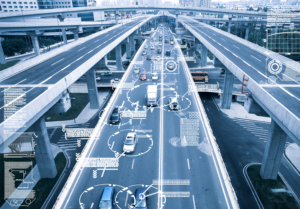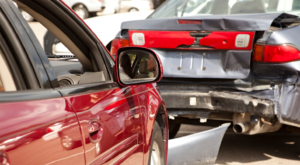By 2022, new cars produced in the EU will only come off the production line after being equipped with a series of intelligent systems to prevent accidents. These include Intelligent Speed Adaptation (ISA) systems, which read speed limits (and/or obtain the relevant information from navigation systems), or so-called Speed Limit (Information) systems, which inform about the maximum permitted speed and, if necessary, limit the speed of the vehicle upwards (at a certain speed, no further increase is permitted).

In principle, one differentiates between intervening systems and (only) assisting systems. What makes ISA systems preferable to pure speed limiters (or speed limit information systems) is the technical detail of adapting the top speed to the local speed limit, by reducing engine power. In contrast to ISA systems, speed limiters cannot adjust the speed; they can only lock it down. Information systems only inform, without influencing speed. The EU Commission is now calling for an assistant ISA system that can be overridden by drivers for all vehicles in categories M (passenger cars) and N (lorries). The intention is to reduce the number of deaths on European roads. The EU expects a reduction of road deaths of about 20 percent.
In Sweden, the Intelligent Speed Assistants are already widely installed, accounting for one third of the Swedish transport fleet according to the European Road Safety Council. Volvo also wants to limit its vehicles to 180 km/h in the future. Other manufacturers have ordinarily locked their vehicles at 250 km/h, except for electric vehicles where the energy strategy requires a lower speed limit. ISA systems have already been extensively tested in 11 Member States. A study carried out in Norway in 2014 confirms that ISA systems are the most promising systems on the market for the prevention of rear-end collisions.
Speed assistants are designed below a possibly absolute speed limit in such a way that they do not lead to automatic braking, but lower the speed of the vehicle by reducing the engine power. However, the final decision as to whether the speed limit should actually be adhered to lies with the vehicle owner, so that, for example, he is still able to use a temporarily higher speed for overtaking. He can continue to increase his speed as he chooses (by overcoming a counter-pressure at the accelerator pedal), even permanently.
What does the use of the ISA system mean for the general road user?
The use of the ISA system—as a pure assistance system—does not relieve the driver of his responsibility for adhering to the prescribed or situation-dependent maximum speed. Nor does the use of the ISA system mean that in the future, as an additional road user, one can rely solely on the all-around observance of the maximum speed.
Studies show that, in Europe, 30 percent of all motorists somehow regularly exceed the speed limit on motorways, and 80 percent so do in urban areas—now and then, or occasionally. The purpose of the ISA system is to curb this widespread bad habit of speeding.
What does the use of the ISA system mean for highly or fully automated vehicles?
Currently, a vehicle maneuvering safely in road traffic not only has to master the tasks of safe navigation, collision avoidance and active compliance with rules, but also, and above all, forecast and detect misconduct by third parties, draw the right conclusions and select the driving strategy.
This applies even more if—as is now the case in Germany—the legislature grants the driver of a Level 3 assisted vehicle the right to turn away eyes and mind from traffic. Every driver and every autonomous vehicle must therefore expect the other road users will significantly exceed the prescribed maximum speed. The individually permissible maximum speed in the respective driving situation is not decisive; this will not change for the time being. German courts generally permit the even clear violation of speed limits to take second place to, for example, a violation of the right of way; i.e. whoever disregards the right of way remains responsible for the following accident, even if the person with right of way has disregarded the speed limit incumbent on him.
In other words, a driver (and thus also a Level3/4/5 driving system) cannot rely on other road users to even approximate the maximum permitted speed, but must, to the contrary, assume and include in his calculation and the choice of driving strategy, the fact that the other road user may be driving significantly too fast. This can only change in the future if there is a political and technical solution, which guarantees rule compliance in the speed range, i.e. fixed limits and all vehicles would be equipped with this hard speed limiter. The current ISA system in question is not, because every driver can override the speed adaptation. Due to the lack of acceptance of a fixed limitation among drivers, this is not to be expected in the foreseeable future. Moreover, it took at least three generations of vehicles before they were all equipped with such a system. The experience of the right-turn assistant for trucks has shown that the most sensible assistance systems cannot be integrated so easily into vehicles across the board.
ISA systems and environmental protection
By reducing speed in a timely manner, autonomous systems enable vehicles to emit less CO2. Even in traffic jams, starting and braking, which are rich in pollutants, can be avoided. The programming of intelligent traffic routes also makes it possible to reduce spontaneous congestion situations. There is no doubt that the industry takes the trends in autonomous driving seriously. Top ratings at EuroNCAP are awarded almost exclusively to vehicle types equipped with autonomous systems.
Black box, data collection and evidence facilitation
A black box, a hard disk for storing traffic data, is also to be installed in the vehicles. If the ISA system was ignored by the driver and was driven faster despite a suggestion to lower its speed, the black box could be read, comparable to the black box in an airplane. This serves to facilitate evidence and can relieve the burden on the driver in the event of accidents, according to the European Road Transport Council. However, this leads to new challenges in data protection law. Therefore, anonymous storage is, at present, intended for accident research and traffic analysis. The system does not store any data that could lead to traffic fines later, and in the event of an accident, only the seconds before and after the accident are stored.
Outlook
From 2022, all new vehicle types are to be equipped with such technologies. The exact type of technologies used in the hardware or software is not regulated. In order to ensure safety in road traffic throughout the EU, it is necessary to design uniform road signs and road markings throughout the country, as well as to program the vehicle and map service comprehensively. Nobody benefits if the vehicle ensures compliance with the rules in Germany, but in Italy, for example, reduces the speed too early or too late because the signs look different or the rules are not recognizable to the vehicle, be it visually or in the system. Susceptibility to errors would reduce acceptance.

Furthermore, the “eCall,” which is already installed in many vehicles, is to be installed mandatorily. Autonomous emergency braking systems are capable of reducing the frequency of accidents caused by inattention or distraction by around 38 percent; they will also be mandatory.
The core of the strategy is a safe transport system. The goal is to reduce the number of fatalities and serious injuries in road traffic, according to Vision Zero, to zero. It is a long way to get there. The number of people killed in road accidents worldwide has risen to 1.35 million. This means that one person is killed on the roads every 24 seconds.
Confirmation by EU Parliament in autumn
In order to guarantee these plans for more traffic safety within the EU, there is a need for EU-wide harmonization of infrastructure, especially with regard to the standardization of road signs and the design of traffic routes, both on motorways and on rural roads. This is the only way the systems can fulfil their safety tasks. The way could be paved for more cooperation in the EU-wide extension of the autonomous transport system, by a confirming decision of the EU Parliament, and the Member States in September.
USEFUL LINKS
- Subscribe to the Driverless Commute blog to receive the latest news on self-driving vehicles.
- Check out Dentons’ newsfeed aggregating the latest stories on self-driving vehicles.
- Learn more about Dentons and The Driverless Commute
- Follow Dentons on LinkedIn and Twitter

